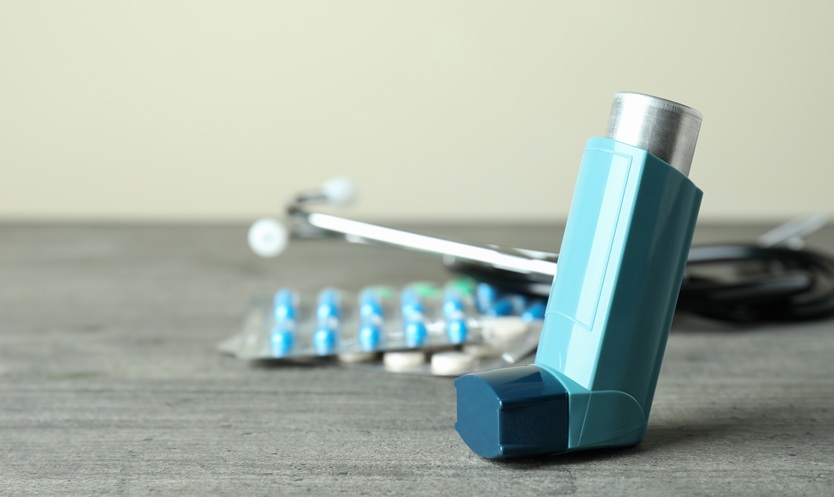Prof Greet Van den Berghe | ERS Gold Medal in ARDS Winner Chair Intensive Care Medicine, UZ Leuven, and Head Laboratory of Intensive Care Medicine, KU Leuven, Leuven, Belgium
![]()
What attracted you to specialise in the endocrinology of critical illness?
When I was a junior attending physician in the intensive care unit (ICU), quite some time ago, I noticed that long-stay ICU patients, adults and children alike, quickly started to look much older than their chronological age and at the same time showed endocrine and metabolic abnormalities that mimicked certain alterations characteristic of ‘ageing’. I hypothesised that maybe this ‘accelerated ageing’ phenotype of ICU patients could in part be iatrogenic and, if so, could perhaps be preventable. These thoughts were the trigger for my PhD research, in which I could show that the infusion of dopamine, a drug at that time used in virtually every ICU patient, was causing a suppression of the anterior pituitary, which could be reversed by omitting its use. In my postdoctoral research, we went a step further and identified the biphasic neuroendocrine and metabolic responses to acute and prolonged critical illness both in patients and in animal models. This research clarified many earlier apparent paradoxes and provided the basis for the subsequent large scale randomised controlled trials (RCT) that we have performed with our team.
One of your main research areas regards parenteral nutrition in the critically ill. What have been your most interesting results?
As ICU patients cannot eat normally by mouth and often do not tolerate gastric tube feeding, a finding that was associated with poor outcome, for decades ICU physicians advocated the early use of supplemental parenteral nutrition, which was assumed to prevent the loss of lean body mass in critically ill patients and hereby to improve outcome. However, the causality of this association was never tested by well-designed RCT. After we had shown that hyperglycaemia, which is substantially aggravated by the infusion of parenteral nutrition, was causally related to poor outcome, we started to have doubts about the assumed benefit of the early use of parenteral nutrition for ICU patients. In fact, we hypothesised that fasting responses during severe illnesses may have evolutionary conserved benefits by helping the body to clear cellular damage, which is essential for recovery from critical illness. After further consolidation of this hypothesis through research in our animal models, we performed two large, multicentre RCT comparing the use of early parenteral nutrition with not using it and instead accepting virtual fasting up to 1 week in the ICU. The results were striking. Omitting the use of early parenteral nutrition and hereby allowing the fasting responses, such as the activation of autophagy, to play their cellular housekeeping roles during the first week of critical illness, accelerated recovery from critical illness both in adults and even more so in young children. We also could show that this simple metabolic intervention, the omission of the early use of parenteral nutrition, also had long-term benefits, years after critical illness and treatment in the ICU. In particular in critically ill children, this long-term benefit meant prevention of neurocognitive impairment of which the importance cannot be neglected. Very recently, we could show that epigenetic alterations, more specifically aberrant alterations in DNA methylation, provided a biological basis for this long-term harm induced by the early use of parenteral nutrition during critical illness.
This year, you were awarded the ERS Gold Medal in ARDS. Please could you tell about the key research that contributed to this?
I have no idea, as the nomination really came as a total surprise to me. I can only speculate on what exactly contributed to being awarded this prestigious Gold Medal. Perhaps because my translational research – from the bed to the bench and back – spans from basic research on pathophysiology and on the discovery of novel preventive and therapeutic targets all the way to clinical research with large RCT with patient-centred hard clinical endpoints, including long-term physical and neurocognitive outcomes.
Over the years that you have been practising in intensive care, how have you seen the field change in terms of advancements to the technology or approaches used?
Intensive care medicine is a rather young discipline which took a start in the 1950s with the polio epidemic and the introduction of mechanical ventilation. Since then, there has been a truly revolutionising phase with new technologies being developed and introduced in the clinic, which allowed to prevent death from previously lethal conditions. Those early years were characterised by progressively introducing more and more treatments that were assumed to improve outcome, or if not were probably harmless, although solid evidence from good quality research was often lacking. The recent years have been characterised by a shift towards critically questioning and investigating a lot of what we were used to do in the ICU and the main lesson, in my view, is that also in intensive care medicine, “less may be more”. The assumption “if not beneficial, likely harmless” has proven wrong more often than occasionally. I am a strong advocate of further prioritising excellence in basic and clinical research in intensive care, and of not rushing into conclusions based on results from too small or poorly designed studies, in order to improve patient outcomes. No less so in the context of the COVID-19 pandemic.
In your opinion, what do you believe to be a particularly promising area in the field of intensive care medicine?
I can only answer this question from my own focus and research interests, which inevitably is biased, I am afraid. Currently, my group is focussing on three large areas. First, we are performing exciting research on how metabolic interventions, such as blood glucose control or feeding strategies, affect the epigenome as a potential mediator of ICU-acquired weakness and its long-term legacy. Second, the team is investigating whether the evolutionary conserved catabolic pathways, such as lipolysis and ketogenesis, can be exploited in the search for prevention of brain dysfunction and of ICU-acquired weakness in critically ill patients. In that context, the team is also exploring the role of fasting-mimicking diets in the ICU. A third large programme is on further understanding the hypothalamic–pituitary–adrenal stress responses to acute and prolonged critical illness. The latter is also one of the main research questions that are being addressed by the team in relation to COVID-19-induced respiratory and multiple organ failure. I hope that all three programmes will reveal insights that will be important to pave the way towards improved outcome for critically ill adults and children. More generally in intensive care medicine, I think that the fascinating link between metabolism, coagulation, and immunology is one to further explore in detail.
What impact is the COVID-19 pandemic having on intensive care medicine, and how do you think it will shape the future of the field?
The COVID-19 pandemic has already had an enormous impact on intensive care medicine and on the medical and paramedical staff all around the globe. It has been a very stressful time for all of us and some have paid a too high price while helping patients and trying to cope. Again, I can only speculate about the future, but one good thing that may result from the COVID-19 disaster is that intensive care medicine now no longer is something obscure and unknown to the lay public and to policy makers. Everybody now understands the importance of our medical discipline and hopefully this will result in the allocation of more governmental budgets to clinical intensive care and to research in the field.
In intensive care medicine, what have been the most important learnings from the COVID-19 pandemic so far?
If you are referring to the most important new insights about the disease pathophysiology and possible treatments, I think it is too early to know for sure. As I said earlier, we should not rush into conclusions. We should continue to focus on high-quality research so that we understand better before we introduce treatments that may not only be beneficial but could also carry risk of harm.
While being cautious and advising not to overinterpret any of the available data, I think that the severe form of COVID-19 respiratory failure and acute respiratory distress syndrome, that we have seen in our ICU worldwide, is quite different from the typical bacterial sepsis-induced acute respiratory distress syndrome. There is reason to believe that severe COVID-19 may start as a local ‘endotheliitis’ in the lungs rather than as a particularly destructive form of ‘alveolitis’ and that the early activation of coagulation may be a key trigger upstream in the cascade of inflammation and organ failure. In my personal opinion, protecting the endothelium, by omitting early use of parenteral nutrition and preventing hyperglycaemia and by a cautious use of corticosteroids for selected patients, to name but a few strategies that may work, while putting a brake on the coagulation cascade very early on in the disease course could be quite important in preventing poor outcome. This has been the strategy that we have followed during the first COVID-19 wave in our centre, where the very low mortality rate may have been a consequence hereof. But again, high-quality research via RCT is the only way to investigate properly whether that statement is true or false.








